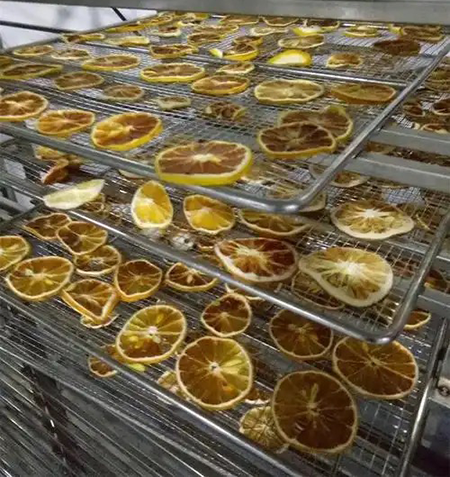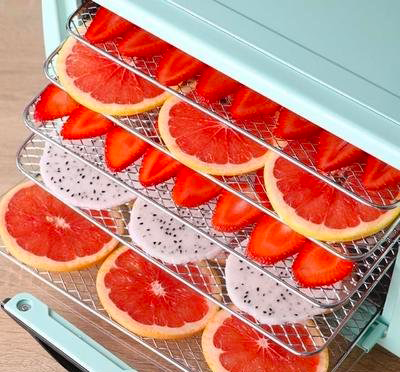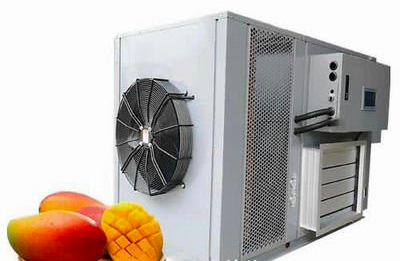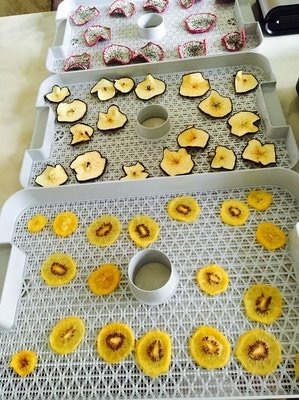
Content Menu
● Understanding Heat Pump Dryers
● Benefits of Heat Pump Dryers
>> Energy Efficiency
>> Consistent Drying Quality
>> Environmentally Friendly
>> Versatility
>> Reduced Labor Costs
● Drawbacks of Heat Pump Dryers
>> Higher Initial Investment
>> Longer Drying Times
>> Maintenance Requirements
● Cost-Benefit Analysis
● Case Studies: Real-World Applications
>> Case Study 1: Fruit Drying Operation
>> Case Study 2: Vegetable Dehydration Facility
>> Case Study 3: Herb Drying Business
● Conclusion
● Frequently Asked Questions
>> 1. What types of food can be dried using a heat pump dryer?
>> 2. How much energy does a heat pump dryer consume compared to traditional dryers?
>> 3. Can I use a heat pump dryer for large-scale production?
>> 4. What maintenance do heat pump dryers require?
>> 5. Are there any financial incentives for using energy-efficient equipment like heat pump dryers?
In recent years, the food drying industry has witnessed significant advancements in technology, particularly with the introduction of heat pump dryers. As a manufacturer of food drying machines in China, we understand the importance of providing efficient and cost-effective solutions for our clients, including OEM services for international brands and wholesalers. This article will explore whether investing in a heat pump dryer is worth the extra cost by examining its benefits, drawbacks, and overall value in food drying applications.

Understanding Heat Pump Dryers
Heat pump dryers operate on a relatively simple principle: they use a refrigeration cycle to remove moisture from food products. Unlike traditional dryers that rely on direct heat sources, heat pump dryers recycle the air within the unit. This process not only conserves energy but also maintains a consistent temperature, which is crucial for preserving the quality of dried foods.
How Heat Pump Dryers Work:
- Evaporation: The dryer draws in moist air from the food product.
- Condensation: The moisture is condensed into water, which is then removed from the system.
- Recycling: The dry air is reheated and circulated back into the drying chamber.
This cycle continues until the desired moisture content is achieved.
Benefits of Heat Pump Dryers
Investing in a heat pump dryer offers several advantages that can justify the higher initial cost:
Energy Efficiency
Heat pump dryers are known for their energy efficiency. They consume significantly less energy compared to conventional electric or gas dryers. This efficiency translates into lower operational costs over time, making them a smart investment for businesses looking to reduce their energy bills.
Consistent Drying Quality
One of the critical factors in food drying is maintaining consistent quality. Heat pump dryers operate at lower temperatures than traditional dryers, which helps preserve the nutritional value and flavor of the food. This is particularly important for products like fruits, vegetables, and herbs, where high temperatures can lead to nutrient loss and undesirable changes in taste.
Environmentally Friendly
With growing concerns about environmental sustainability, heat pump dryers are an eco-friendly option. Their energy-efficient design reduces carbon emissions associated with energy consumption. Additionally, many models use refrigerants with low global warming potential (GWP), further minimizing their environmental impact.

Versatility
Heat pump dryers are versatile and can be used for a wide range of food products. Whether you are drying fruits, vegetables, meats, or herbs, these machines can be adjusted to meet specific drying requirements. This flexibility makes them suitable for various applications within the food industry.
Reduced Labor Costs
Automation features in modern heat pump dryers can lead to reduced labor costs. Many models come equipped with advanced controls that allow for precise monitoring and adjustment of drying parameters without constant supervision. This automation can free up staff to focus on other essential tasks within your operation.
Drawbacks of Heat Pump Dryers
While there are many benefits to using heat pump dryers, it is essential to consider some potential drawbacks:
Higher Initial Investment
The most significant drawback of heat pump dryers is their higher upfront cost compared to traditional drying methods. For small businesses or startups, this initial investment can be a barrier to entry. However, it's crucial to weigh this cost against long-term savings on energy bills and improved product quality.
Longer Drying Times
Heat pump dryers typically have longer drying times than conventional dryers due to their lower operating temperatures. While this slower process helps maintain quality, it may not be suitable for businesses that require rapid processing times. Understanding your production needs is essential when considering this type of dryer.
Maintenance Requirements
Heat pump dryers require regular maintenance to ensure optimal performance. While they are generally reliable machines, neglecting maintenance can lead to decreased efficiency and increased operational costs over time. Businesses must be prepared to invest time and resources into maintaining their equipment.
Cost-Benefit Analysis
To determine if a heat pump dryer is worth the extra cost for your business, consider conducting a cost-benefit analysis:
1. Initial Costs: Calculate the purchase price of the heat pump dryer versus traditional options.
2. Operational Costs: Estimate energy consumption and maintenance costs over time.
3. Quality Improvement: Assess how improved product quality could enhance marketability and sales.
4. Production Needs: Evaluate your production volume and required drying times to ensure that a heat pump dryer meets your operational demands.
By analyzing these factors, you can make an informed decision about whether a heat pump dryer aligns with your business goals.
Case Studies: Real-World Applications
To further illustrate the value of heat pump dryers in food processing, let's explore some real-world applications where these machines have made a significant impact:
Case Study 1: Fruit Drying Operation
A fruit processing company specializing in organic dried fruits decided to invest in a heat pump dryer after experiencing inconsistent results with traditional methods. By switching to a heat pump system, they were able to maintain higher nutritional values and achieve better flavor profiles in their products. The company reported a 30% reduction in energy costs within the first year of operation due to the efficiency of the new dryer.
Case Study 2: Vegetable Dehydration Facility
A vegetable dehydration facility faced challenges with high energy bills and inconsistent product quality using conventional drying methods. After installing a heat pump dryer, they noticed not only lower energy consumption but also improved color retention and taste in their dehydrated vegetables. Customer feedback reflected increased satisfaction with the product quality, leading to higher sales volumes.
Case Study 3: Herb Drying Business
An herb drying business that primarily served local restaurants transitioned to using heat pump technology after receiving requests for higher-quality dried herbs. The ability to control temperature precisely allowed them to produce vibrant colors and potent flavors that appealed to chefs looking for premium ingredients. The investment paid off quickly as they expanded their customer base significantly.
Conclusion
In conclusion, while heat pump dryers may come with a higher initial price tag, their benefits often outweigh these costs in terms of energy efficiency, product quality, and environmental impact. For businesses focused on sustainability and long-term savings, investing in a heat pump dryer could be a strategic move that pays off over time.
As you consider upgrading or expanding your food drying capabilities, weigh your options carefully and consult with manufacturers who specialize in OEM services tailored to your needs. With the right equipment in place, you can enhance your product offerings while reducing operational costs.

Frequently Asked Questions
1. What types of food can be dried using a heat pump dryer?
Heat pump dryers are suitable for various foods including fruits (like apples and bananas), vegetables (such as tomatoes and peppers), meats (jerky), and herbs (basil and oregano).
2. How much energy does a heat pump dryer consume compared to traditional dryers?
Heat pump dryers typically consume 50-70% less energy than conventional electric or gas dryers due to their efficient recycling of air.
3. Can I use a heat pump dryer for large-scale production?
Yes! Many manufacturers offer industrial-sized models designed specifically for large-scale food processing operations.
4. What maintenance do heat pump dryers require?
Regular maintenance includes cleaning filters, checking refrigerant levels, inspecting seals and gaskets, and ensuring proper airflow throughout the system.
5. Are there any financial incentives for using energy-efficient equipment like heat pump dryers?
Many governments offer tax credits or rebates for businesses that invest in energy-efficient equipment as part of sustainability initiatives.
By considering all these aspects—benefits versus drawbacks—businesses can make informed choices about whether transitioning to a heat pump dryer aligns with their operational goals while enhancing product quality and sustainability efforts within the food industry.












